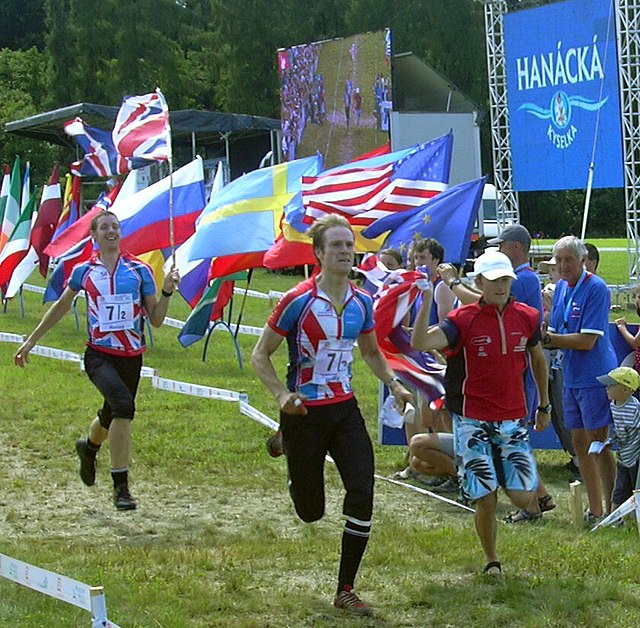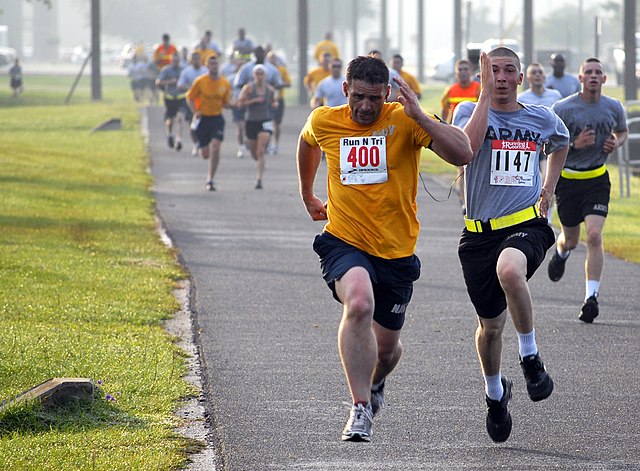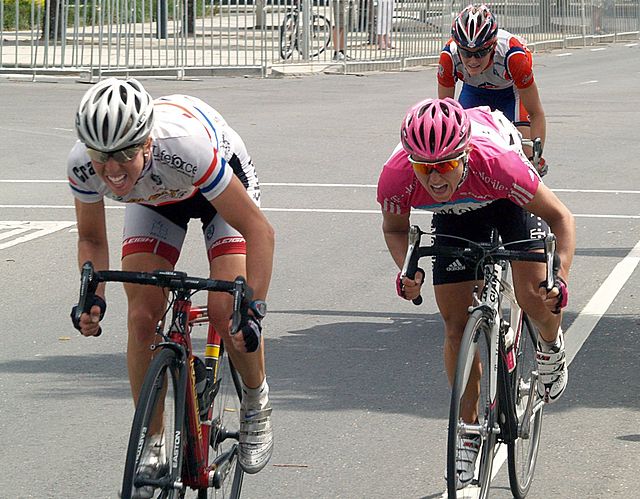A relay race is a racing competition where members of a team take turns completing parts of racecourse or performing a certain action. Relay races take the form of professional races and amateur games. Relay races are common in running, orienteering, swimming, cross-country skiing, biathlon, or ice skating. In the Olympic Games, there are several types of relay races that are part of track and field. Relay race, also called Relay, is a track-and-field sport consisting of a set number of stages (legs), usually four, each leg run by different members of a team. The runner finishing one leg is usually required to pass the next runner a stick-like object known as a "baton" while both are running in a marked exchange zone. In most relays, team members cover equal distances: Olympic events for both men and women are the 400-metre and 1,600-metre relays. Some non-Olympic relays are held at distances of 800 m, 3,200 m, and 6,000 m. In the less frequently run medley relays, however, the athletes cover different distances in a prescribed order—as in a sprint medley of 200, 200, 400, 800 metres or a distance medley of 1,200, 400, 800, 1,600 metres.

World Orienteering Championship 2008 gold medal winners in relay
Swimmers about to make the pass during a relay race
A final-leg runner for the University of Wisconsin
Two runners prepare to pass the baton.
In sports, racing is a competition of speed, in which competitors try to complete a given task in the shortest amount of time. Typically this involves traversing some distance, but it can be any other task involving speed to reach a specific goal.
Two men engaging in a sprint finish at the end of a 5-kilometre road running competition
The Men's lightweight coxless four rowing race at the 2012 Summer Olympics in London
The start of the 2018 Austrian Grand Prix auto race
Two women in a tight sprint finish at the end of the Australia World Cup cycling race








